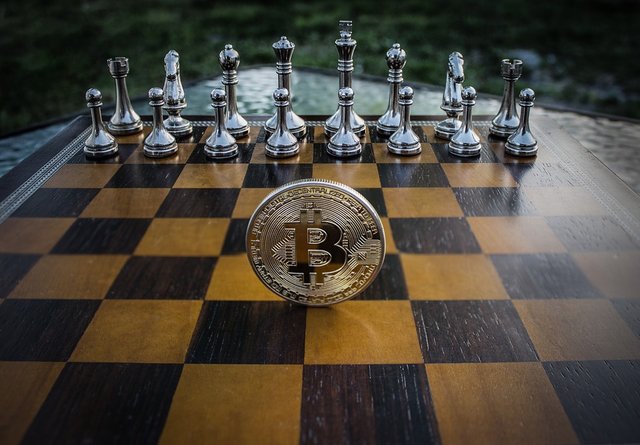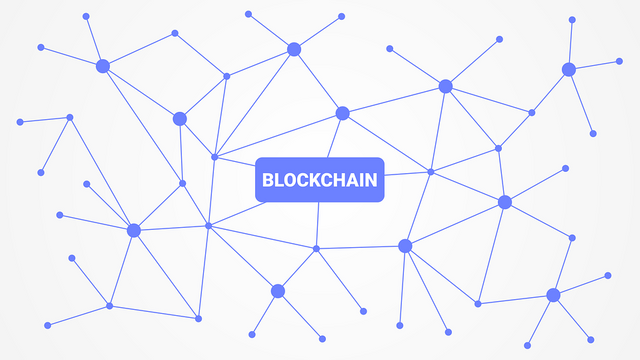Blockchain
The 21st century has to do with technology. With the increasing need for modernization in our daily lives, people are open to accepting new technologies. From the use of remote control to control the devices to the use of voice notes to give commands; Modern technology has made room in our common lives. Technologies such as Augmented Reality and IoT have grown over the past decade and are now adding:
Blockchain technology.

Blockchain: revolutionary technology that had a miraculous impact on different industries was introduced in the markets with its first modern application, Bitcoin. Bitcoin is nothing more than a form of digital currency that can be used in place of fiduciary money for trade. And the technology behind the success of encryption coins is called Blockchain.
It is often mistakenly thought that Bitcoin and Blockchain are one, but this is not the case. The creation of crypto-coins is one of Blockchain's applications. In addition to Bitcoin, many applications based on Blockchain technology are being developed.
What is a blockchain?

In simple terms, Blockchain can be described as a data structure that contains transactional records, ensuring security, transparency, and decentralization. You can also consider it as a string or records stored as blocks that are not controlled by any authority. A blockchain is a great distributed book that is totally open to everyone on the net. When information is stored in a blockchain, it is extremely difficult to change or modify it.
Each transaction in a blockchain is protected by a digital signature that demonstrates its authenticity. Due to the use of encryption and digital signatures, the data stored in the blockchain is tamper-proof and can not be changed.
Blockchain technology allows all network participants to reach an agreement, commonly known as consensus. All data stored in a blockchain is digitally recorded and has a common history available to all network participants. In this way, the risks of fraudulent activity or duplication of transactions are eliminated without the need to resort to third parties.
To better understand the chain of blocks, let's look at an example where you are looking for an option to send money to your friend who lives in a different place. A general option that you can usually use can be a bank or through a payment transfer application such as PayPal or Paytm. This option involves third parties to process the transaction, as a result of which an additional amount of your money is deducted from the transfer fee. Also, in these cases, you can not guarantee the security of your money, as it is very possible for a hacker to stop the network and steal your money. In both cases, the customer suffers. This is where Blockchain comes into play.
Instead of using a bank to transfer money, if we use a chain of blocks in such cases, the process becomes much simpler and safer. There is no additional charge because the funds are processed directly by you, which eliminates the need for third parties. In addition, the blockchain database is decentralized and not limited to one location, which means that all the information and records stored in the blockchain are public and decentralized. Because information is not stored in one place, no hacker will corrupt it.

How does blockchain work?
A blockchain contains data or information. Although it was previously discovered, the first successful and popular application of Blockchain technology was introduced in 2009 by Satoshi Nakamoto. He created the first digital crypto currency called Bitcoin thanks to Blockchain technology. Let's see how a blockchain works.
Each block in a blockchain network stores information with the hash of the previous block. A hash is a unique mathematical code that belongs to a specific block. If the information within the block changes, the block hash is also subject to change. Connecting blocks using unique hash keys is what blockchain guarantees.
Although transactions occur in a blockchain, there are nodes in the network that validate these transactions. In the Bitcoin blockchain, these nodes are called miners and use the proof-of-concept concept to process and validate transactions on the network. For a transaction to be valid, each block must refer to the hash of its previous block. The transaction will only occur if the hash is correct. If an attacker attempts to attack the network and modifies information for a specific block, the hash attached to the block will also be modified.
The violation will be detected because the modified hash will not match the original. This ensures that the blockchain is unalterable as if the changes made in the blockchain spread across the network and were easily detected.
In summary, see how blockchain allows transactions to execute transactions:

A blockchain network uses public and private keys to form a digital signature that guarantees security and consent.
Once these passwords provide authentication, authorization is required.
The blockchain allows network participants to perform a mathematical check and reach consensus to reach agreement on a certain value.
During the transfer, the sender uses your private key and announces the transaction information on the network. A block is created
Contains information such as digital signature, date stamp, and a public key of the recipient.
This block of information is transmitted on the network and the validation process is started.
The miners of the entire network begin to solve the mathematical puzzle related to the transaction to process it. To solve this puzzle, miners must invest their computing power.
After solving the puzzle first, the miner receives rewards in the form of bitcoins. This type of problem is called mathematical proof of work problems.
Once most nodes in the network have reached consensus and a common solution, the block is time-tagged and added to the existing blockchain. This block can contain money for data and messages.
After the new block is added to the chain, the existing copies of the blockchain will be updated to all nodes in the network.
-Characteristics of the blockchain-
The revolutionary blockchain technology is differentiated by the following features.
- Decentralized:
Blockchains are decentralized, meaning that no person or group has the authority of the global network. Although all network members have a copy of the ledger distributed with them, no one can change it alone. This unique feature of the blockchain allows transparency and security, allowing users.
- Peer-to-Peer Network:
With the use of Blockchain, the interaction between two parts through a peer-to-peer model is easily achieved without the intervention of third parties. Blockchain uses the P2P protocol that allows all network participants to maintain an identical copy of the transactions, which allows consensus approval. For example, if you want to make a transaction from one part of the world to another, you can do it with blockchain alone in seconds. In addition, no further interruption or charge will be deducted from the transfer.
- Immutable:
The immutability property of a blockchain refers to the fact that any data, once written in the blockchain, cannot be modified. To understand immutability, consider sending an email as an example. After you send an email to a group of people, you will not be able to retrieve it. To find a solution to the problem, you should ask all recipients to delete your emails, which is quite tedious. This is how immutability works. Once the data is processed, it can not be changed. In the case of the blockchain, if you try to modify the data of a block, you have to change the whole blockchain that follows it, each block stores the hash of the previous block. A change in a hash will result in a change in all subsequent hashes. It is extremely difficult for someone to change all the hashes because it requires a lot of computing power. As a result, data stored in a blockchain is not subject to change or hacker attacks because of its immutability.
- Tamper-Proof:
With the immutability property built into blockchains, it is easier to detect forgery of all data. Blockchains are considered inviolable because of any change, even in a block, can be detected and processed without problems. There are two main ways to detect changes, that is, hashes and blocks. As described above, each hash function associated with a block is unique. You can consider it as a fingerprint of a block.
Types of blockchains
Although the blockchain has evolved to several levels since its inception, there are two main categories of blockchains that can be classified primarily, namely, public and private blockchains.
Before we go to the difference between the two, let's monitor the similarities between the chain of public and private blocks:
• Public and private block chains have decentralized peer-to-peer networks.
• All network participants keep the ledger copy shared with them.
• The network saves copies of the general ledger and synchronizes the latest update by consensus.
• The general ledger security and immutability rules are defined and enforced on the network to prevent malicious attacks.
Now that we know the similar elements of these two block strings, let's look at each of them in detail and their differences.
- Public Blockchain:
As the name implies, a public blockchain is an unauthorized record that anyone can access. Anyone with Internet access can download and access it. In addition, you can also view the overall history of the blockchain and perform all transactions that go through it. Public blockchains generally reward participants in their network by performing the extraction process and maintaining the immutability of general accounting. An example of a public blockchain is the Bitcoin blockchain. Public block lanes allow communities around the world to exchange information in an open and secure way. However, an obvious disadvantage of this type of blockchain is that it can be compromised if the rules are not strictly enforced. In addition, the rules decided upon and applied initially have very little possibility of modification in the later stages.
- Private blockchain:
Unlike the public blockchain, private block chains are those that only trusted participants share. General control of the network is in the hands of the owners. In addition, the rules of a private blockchain can be modified according to different levels of authorization, exposure, number of members, authorization, etc.
Private block strings can operate independently or integrate with other block strings. These are generally used by companies and organizations. As a result, the level of trust required among participants is greater in private blockchains.
Blockchain is a new name in the world of technology, but it is definitely the last. Even in its infancy, the technology has gained enormous popularity since its first application of crypto-coins. New application domains are discovered and tested over the course of days. Once the technology is adopted and accepted globally, it will transform our current way of life.